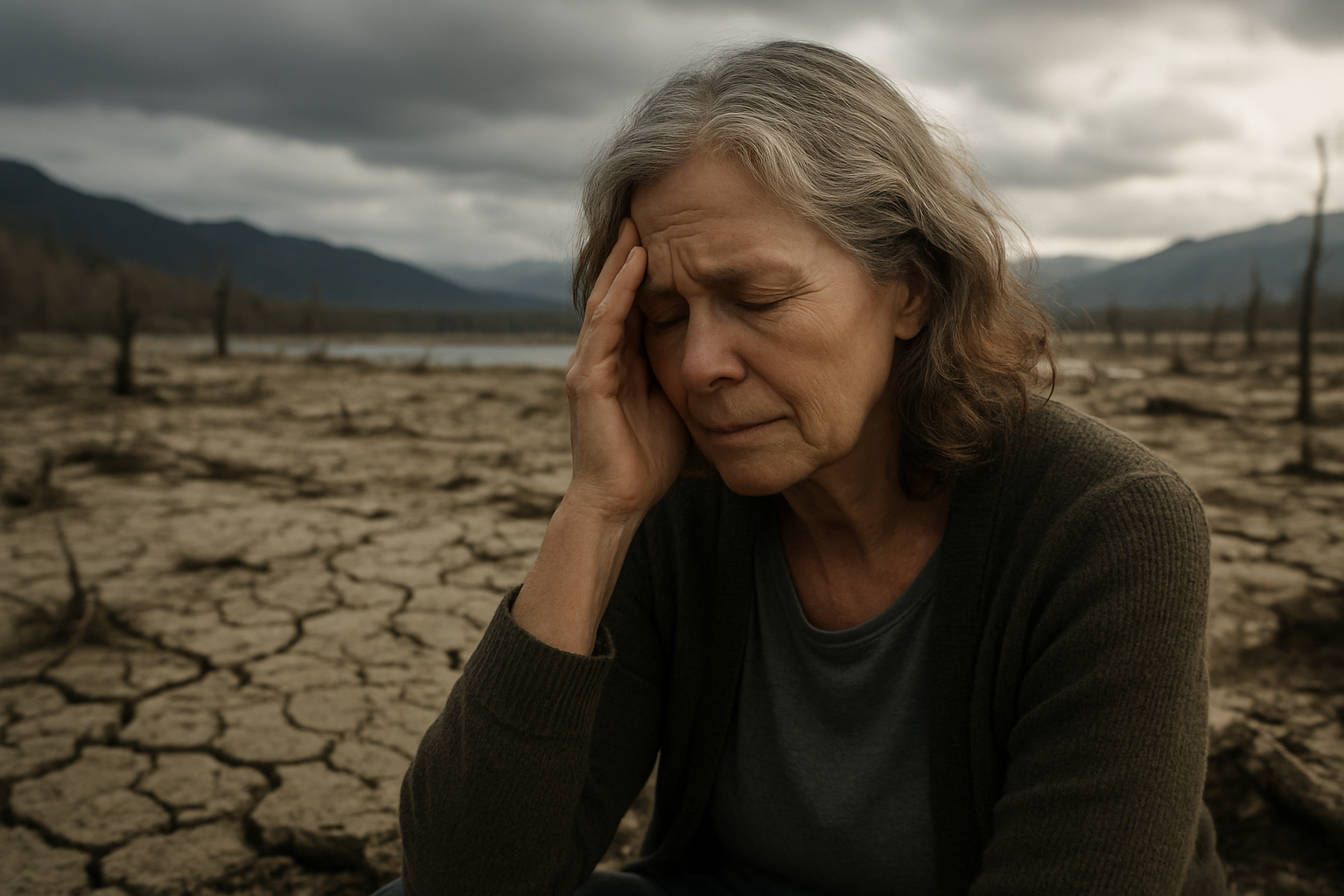Solastalgia: The Emotional Toll of Environmental Change
Climate anxiety meets place-based distress in the emerging phenomenon of solastalgia. This complex emotional response to ecological shifts is reshaping how we relate to our environments and each other. Read below to explore the sociological implications of this growing global experience.

The Origins and Evolution of Solastalgia
Albrecht first observed solastalgia among residents in New South Wales, Australia, who were grappling with the effects of long-term drought and large-scale open-cut coal mining. These environmental changes led to a palpable sense of loss and displacement, even though people hadn’t physically relocated. The term combines solace, desolation, and nostalgia, capturing the melancholy of losing familiar landscapes and ways of life.
Since its inception, the concept has expanded beyond its Australian roots. Researchers have documented solastalgia in various contexts, from Arctic communities facing melting ice to urban dwellers witnessing rapid gentrification. As global awareness of climate change grows, solastalgia has become a rallying point for environmentalists and mental health professionals alike, highlighting the intimate connection between ecological and psychological well-being.
Psychological and Social Impacts
The effects of solastalgia extend far beyond mere sadness or nostalgia. Studies have linked this phenomenon to increased rates of depression, anxiety, and substance abuse in affected communities. The loss of place-based identity can lead to a profound sense of disorientation and disconnection, challenging individuals’ core sense of self and belonging.
Socially, solastalgia can both unite and divide communities. Shared experiences of loss can foster solidarity and collective action, as seen in grassroots environmental movements. However, it can also exacerbate existing social tensions, particularly when different groups have conflicting views on environmental change or unequal abilities to adapt.
Cultural Expressions and Coping Mechanisms
As solastalgia becomes more widely recognized, it’s finding expression in various cultural forms. Artists, writers, and filmmakers are increasingly exploring themes of environmental loss and transformation, creating works that resonate with audiences experiencing similar emotions. This cultural production serves not only as a form of documentation but also as a collective coping mechanism.
Communities are also developing innovative ways to address solastalgia. Some engage in ecological restoration projects, attempting to recreate lost environments. Others focus on preserving cultural memories and practices tied to changing landscapes, ensuring that even as physical places transform, their significance endures in community narratives and traditions.
Implications for Urban Planning and Policy
The recognition of solastalgia is influencing how we approach urban development and environmental policy. Progressive urban planners are now considering the emotional attachment to place in their designs, striving to create spaces that can evolve while maintaining a sense of continuity and familiarity. This approach acknowledges that sustainable development must account for both ecological and psychological factors.
On a broader scale, policymakers are beginning to incorporate the concept of solastalgia into climate adaptation strategies. This includes not only physical infrastructure but also support systems for mental health and community resilience. The goal is to help populations navigate environmental changes with minimal psychological distress, recognizing that emotional well-being is crucial for effective climate action and adaptation.
Future Perspectives: Adapting to a Changing World
As we move further into an era of rapid environmental change, understanding and addressing solastalgia will become increasingly important. Psychologists and sociologists predict that this emotional response will become more prevalent, potentially reshaping our collective relationship with place and nature.
Some experts propose that embracing solastalgia could lead to a more dynamic and resilient approach to place attachment. Rather than clinging to static notions of environment, we might develop more flexible, adaptive relationships with our surroundings. This shift could foster greater ecological awareness and a more proactive stance toward environmental stewardship.
However, critics warn against normalizing the loss of stable environments, arguing that acceptance of solastalgia could lead to complacency in the face of preventable ecological degradation. The challenge lies in finding a balance between acknowledging the reality of change and maintaining the drive to protect and restore our natural world.
As we grapple with these complex issues, solastalgia serves as a powerful reminder of the deep, often overlooked connections between environmental and mental health. By recognizing and addressing this phenomenon, we open new avenues for understanding the human experience in an era of unprecedented ecological transformation.





